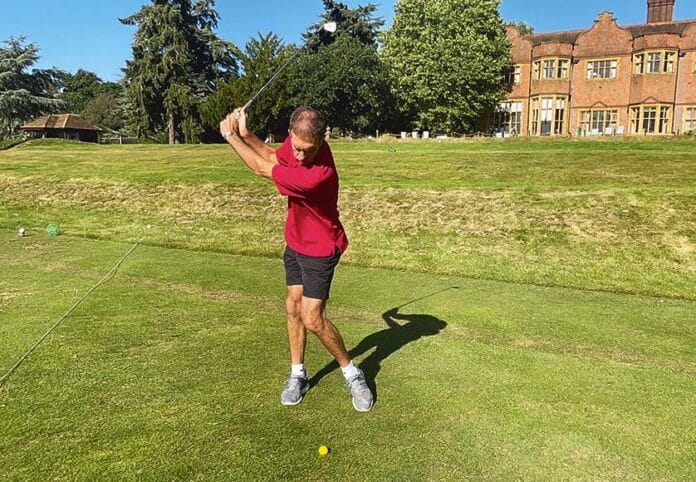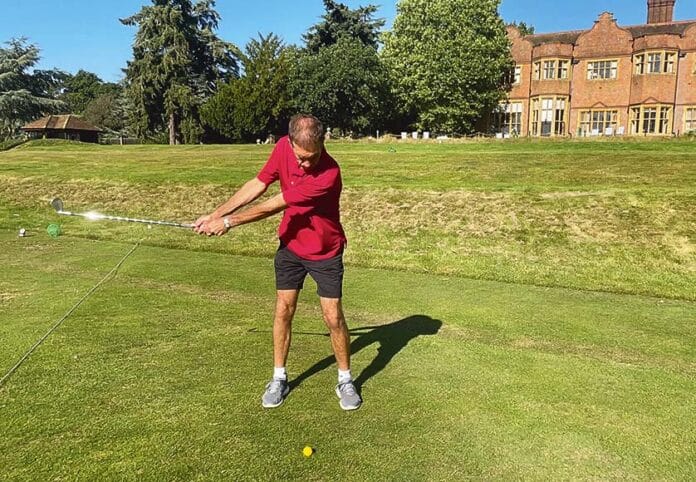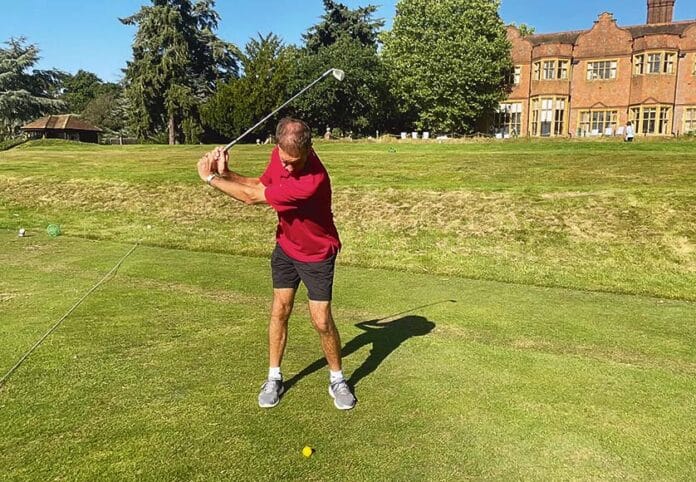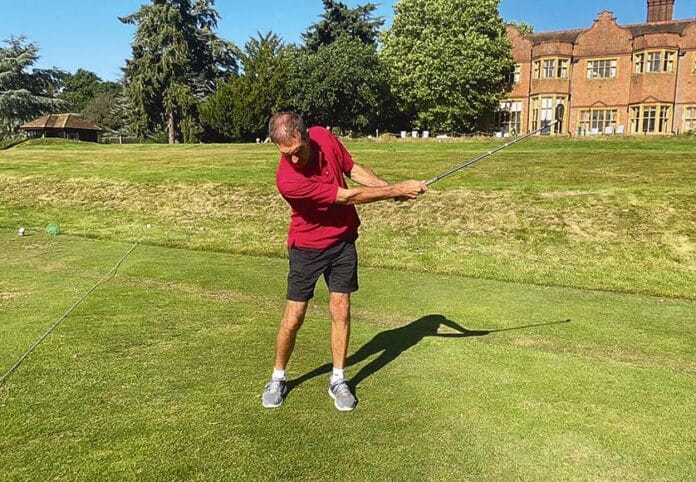We have all experienced too much tension in our golf swing and what a disaster that can be to playing great golf
– August 29, 2024

The first step to curing yourself of too much tension is knowing what it feels like, and you can’t do that unless you experience it.
In this article, I’m going to share with you the 3 most common areas where tension is disruptive in the golf swing and I will take you through a simple process, so you can find your optimum level to produce the most fluid, but also controlled swing.
The 3 areas that cause the biggest problems when it comes to tension are your hands and wrists; shoulders/upper back; and feet. The feet are often the most surprising one, and therefore often neglected, but in my experience, your feet are arguably the most important area to get right.
The process for working on each area is pretty much the same, so let me walk you through it.
We are going to work with a scale of 0 to 10, 10 being the most tension you can create and zero being the most relaxed/loose you can be.
In essence, what you will do is take practice swings only (aiming at a T-peg is fine). Take three practice swings trying to get as close to the level 10 as you can. Then take
3 practice swings as close to level zero as you can.
Once you’ve done that, try not to achieve any particular level and just swing, and let your body find its comfortable and optimal place. Notice where on the scale you believe you are. I really believe in letting your body find the place that suits it best, once you have given it both ends of the scale for comparison.
Let’s now look at what you might experience from each of the 3 areas, and I will share some images to help.
Hands/wrists:
What you might notice at level 10: slow swing speed and very little contribution from your wrists.

What you might notice at level 0: wrists feel a little out of control, but lots of swing speed

Shoulders/upper back:
What you might notice at level 10: Swing feels wooden and restricted.

What you might notice at level 0: it might feel like you are swaying/out of balance, but creating some good ‘lag’ in your swing

Feet:
What you might notice at level 10: feels a lot of effort to hit the ball as lower half feels stuck.

What you might notice at level 0: A much bigger swing with more rotation, but extra footwork can be distracting.

This really can be a fun practise session, and of course once you have followed the above steps with practise swings, introduce a ball.
Working through all three errors is good general maintenance for your golf game at any time, however I’m sure one area will stand out to you as being at the most effective.
Good luck and I would love to hear how it works for you.
If you have any questions or would like to find out more about my coaching in the Algarve and UK, please visit www.scottcranfield.com or contact me on [email protected]
For more tips to help your golf, visit https://www.facebook.com/intuitivegolf
Scott Cranfield is a PGA Master Coach. For over 30 years, he has dedicated his life to helping golfers achieve their goals through a natural approach that embraces the true laws of how the human mind and body work. Scott’s unique approach has led to the creation of multiple training programmes, and the experience of coaching every standard of golfer from complete beginners through to Ryder Cup players. As well as enjoying a long TV career with Sky Sports and Setanta TV, in 2011 Scott was honoured with the award of PGA Master Professional and Coach.
You might also like:










